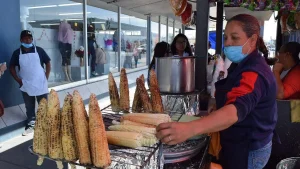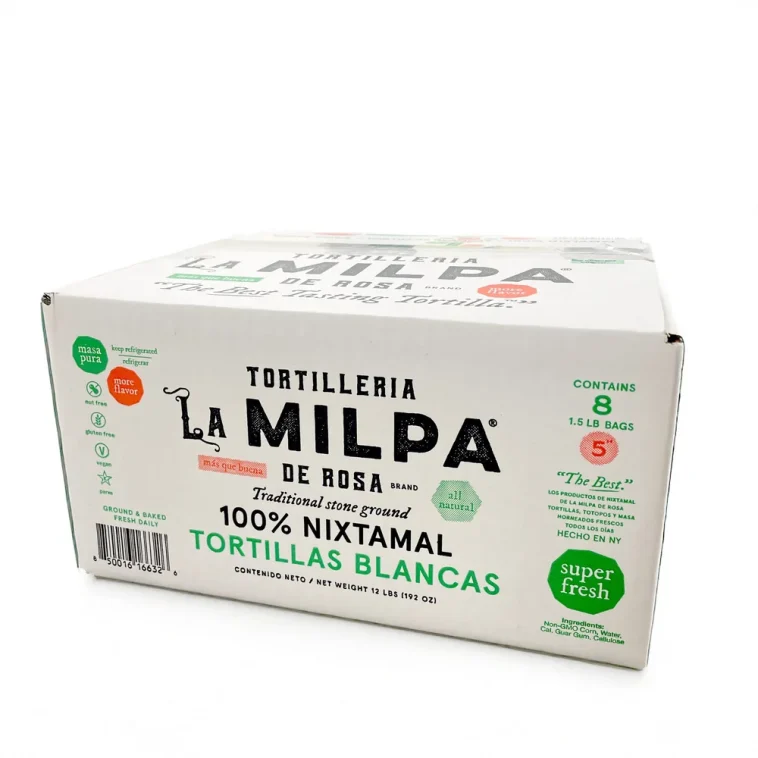Maíz or corn is central to Mexican history, culture, and daily food. But what many people do not know is that corn by itself does not give the human body much nutrition. If you eat plain corn — just boiled or ground without treatment — your body will absorb almost nothing. It will pass through “in and out,” leaving behind very little. The magic happens only after a process called nixtamalization, something ancient Mesoamerican civilizations discovered centuries before any European scientist.
Nixtamalization is the process of cooking corn in water with cal (calcium hydroxide or lime) and then letting it rest. After that, the corn is washed and ground. With this treatment, the important nutrient niacin (vitamin B3) becomes available to the human body, and the corn becomes digestible and nutritious. Thanks to this process, Indigenous peoples of Mexico could live on corn as a staple food without suffering disease.
When corn was brought to Europe after the Spanish conquest, many Europeans adopted corn as their main food, but they did not know about nixtamalization. They simply boiled it or made polenta. The result was serious malnutrition and a terrible disease called pellagra, which caused skin problems, mental confusion, and even death. Europeans had no idea that the secret was not the corn itself, but the way it was prepared in what is now Mexico.
Today in Mexico, nixtamalized corn is used to make tortillas, tamales, pozole, and many traditional foods. This ancient science still lives in every tortillería and every home kitchen that makes fresh masa. On the other hand, much industrial junk food like corn chips or Doritos is made with corn flour that has not gone through true nixtamalization, which is why it does not offer the same nutritional value, if any.
It is impressive to think that thousands of years ago, without laboratories, Indigenous people understood that corn needed treatment. Maybe it was discovered through experimentation, but it became essential knowledge — knowledge that saved generations
.
Key Vocabulary Related to Nixtamalization
| Spanish | Literal English Meaning | Context / Meaning in Use |
|---|---|---|
| Nixtamal | Lime-treated corn | Corn after cooking in lime water |
| Cal (para nixtamal) | Lime | Mineral used to treat the corn |
| Masa | Dough | Ground nixtamal used for tortillas and tamales |
| Tortillería | Tortilla shop | Place where fresh masa products are made |
| Pellagra | Pellagra | Disease caused by niacin deficiency |
| Molino | Mill | Place or machine to grind nixtamal |
| Grano de maíz | Corn kernel | Raw form before any treatment |
| Masa harina | Corn flour | Often industrial, not always nixtamalized |
| Tamal / Tamales | Tamale(s) | Food made from nixtamal dough |
| Tortilla de maíz | Corn tortilla | Staple food made from nixtamal masa |
What About Corn on the Cob? Is It Useless?
Some people ask if eating elote —boiled or grilled corn on the cob sold at fairs or on the street— is a total waste. Not exactly. Corn like that still gives you fiber and some energy, but since it is not nixtamalized, the body cannot access its deeper nutrients, especially niacin (vitamin B3). Your body digests it, but doesn’t truly benefit from it. This is the key difference: a person could not survive healthily on plain corn or popcorn, but ancient Mesoamerican cultures could live on tortillas and tamales, thanks to nixtamalization. It’s not about flavor — it’s about real nutritional value.

Bibliography / Sources Consulted
Besides the videos shown above,
Coe, Sophie D., and Michael D. Coe. The True History of Chocolate. Thames & Hudson. (Includes background on Mesoamerican food practices and nixtamalization.)
Katz, Solomon H., and Mary M. Voigt. Bread and Beer: The Early Use of Cereals in the Human Diet. Anthropology of Food Series. (Covers cereal processing including nixtamalization.)
FAO (Food and Agriculture Organization). Maize in Human Nutrition. United Nations publication. (Nutritional differences between nixtamalized and raw corn.)
Pilcher, Jeffrey M. Planet Taco: A Global History of Mexican Food. Oxford University Press. (Historical and cultural discussion of nixtamal and tortillas.)
Brandolini, Andrea, and Hidalgo, Ana. Nutritional Properties of Maize and Traditional Processing. Journal of Cereal Science. (Explains nutrient availability and deficiencies without nixtamalization.)
Carpenter, Kenneth J. Pellagra. CRC Press. (Medical and historical analysis on niacin deficiency and how maize-consuming cultures avoided pellagra with nixtamalization.)
Fernandez, Adela. Cocina Prehispánica Mexicana. Editorial Panorama. (Covers ancient culinary techniques and traditional practices.)




